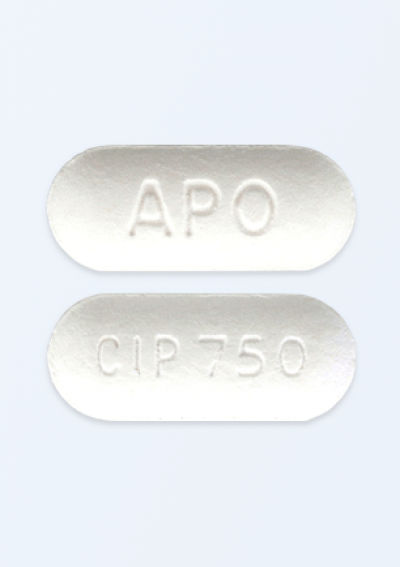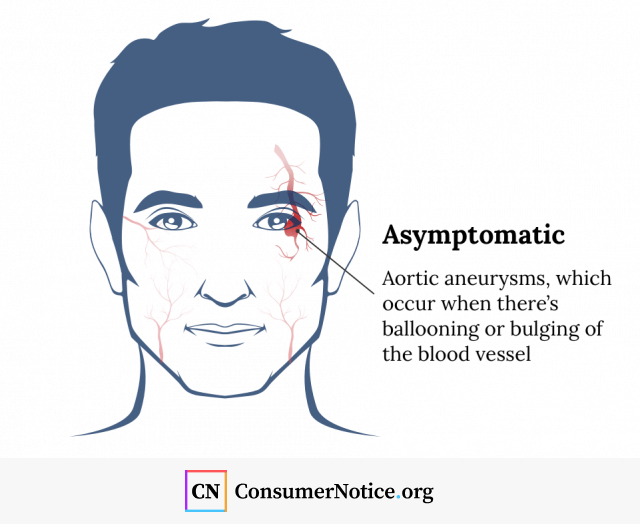Fluoroquinolones
After their introduction in the 1980s, fluoroquinolones became a staple in treating a wide variety of infections. But over the past decade, the Food and Drug Administration has issued numerous warnings about the antibiotics causing unexpected and toxic side effects, ranging from tendon ruptures to aortic aneurysms.

Fluoroquinolones have been used for more than three decades to treat a wide range of bacterial illnesses, including urinary tract infections, sinus infections and bronchitis.
But the popular antibiotics can also cause serious and potentially life-threatening complications. And the FDA warns that the drugs should only be used to treat certain types of mild to moderate infections if the benefits clearly outweigh the risks.
Fluroquinolones, which include ciprofloxacin (Cipro), levofloxacin (Levaquin), moxifloxacin (Avelox) and other medications, work by disrupting two enzymes that are essential for bacteria to replicate. This stops the germs dead in their tracks. But the powerful drugs can also be toxic to the human body.
Over the past two decades, post-marketing drug surveillance has uncovered an array of disabling side effects, ranging from tendon problems to nerve damage to deadly tears of the aorta. And thousands of people who’ve fallen ill after taking the antibiotics have filed fluoroquinolone lawsuits against the drugs’ makers.
Multiple FDA Warnings About Risks of Cipro, Levaquin and Other Similar Antibiotics
Like most drugs, fluoroquinolones can cause a range of unintended side effects. Common reactions can include gastrointestinal upset, headache, dizziness, lightheadedness and insomnia. But in rare cases, individuals may develop more severe reactions.
Serious side effects associated with fluoroquinolones include:
- Aortic aneurysms and ruptures
- Tendinitis and tendon ruptures
- Nervous system damage, including irreversible peripheral neuropathy, which causes weakness, pain and tingling sensations in the hands and feet
- Dangerous drops in blood sugar, including cases of hypoglycemic coma
- Mental changes, including attention problems, disorientation, agitation and delirium
- Aggravation of myasthenia gravis symptoms
Unfortunately, many of these troubling side effects weren’t publicized until decades after the drugs first became available in the United States. As the use of fluoroquinolones grew, so did the number of adverse event reports filed with the FDA and published in various medical studies. And the troubling reports prompted a reevaluation of the drugs’ safety profile.
Between 2008 and 2018, the FDA issued multiple new warnings about the risks of fluoroquinolones and required manufacturers to add several black box warnings to drug labels. Boxed warnings are the most stringent type of warnings and are intended to call attention to serious or life-threatening risks.
Timeline of Problems
-
2008
The FDA added a black box warning to fluoroquinolones advising consumers of an increased risk of tendinitis and tendon rupture.
-
2011
The FDA added a boxed warning advising that the antibiotics may worsen the symptoms of myasthenia gravis, a chronic autoimmune condition that causes neuromuscular weakness.
-
2013
The FDA required new warning labels alerting consumers to the possibility of permanent and serious nerve damage, also known as peripheral neuropathy.
-
2016
The FDA announced that fluoroquinolones may cause “disabling and potentially permanent side effects” affecting the tendons, muscles, joints and nervous system. The agency said the drugs should not be used to treat certain types of “uncomplicated” infections.
-
2018
In July 2018, the FDA issued new warnings that fluoroquinolones could cause dangerous drops in blood sugar and serious mental changes. In December 2018, the agency warned that the drugs can cause ruptures or tears of the aorta.
Reactions typically occur within hours to weeks after starting the antibiotics, according to the FDA. While some people improve after stopping the medications, others continue to be symptomatic for long periods, or indefinitely. In some cases, side effects may worsen with time.
Aortic Bulges and Tears
In 2017, the FDA said in a statement that it had not found enough evidence to support the conclusion that fluoroquinolones could cause bulges or tears in the aorta, which is the largest blood vessel in the body. But a year and a half later, the agency reversed course and warned the public that the drugs could increase the risk of the cataclysmic events.
Aortic aneurysms, which occur when there’s ballooning or bulging of the blood vessel, are frequently asymptomatic. As a result, patients often have no idea they are suffering from the dangerous condition until it’s identified by an imaging test or the vessel bursts. A ruptured aortic aneurysm, also known as a dissected aorta, is fatal in approximately nine out of 10 cases.

When they do occur, symptoms of a growing aortic aneurysm may include:
- A throbbing sensation in the abdomen
- Back pain or abdominal pain
- A steady gnawing pain in the area of the stomach
- Pain in the jaw, neck or chest
- Hoarseness or coughing
- Shortness of breath and trouble swallowing
Aortic aneurysms or dissections are relatively rare events. In the general public, only nine of every 100,000 people will suffer an aortic aneurysm or dissection in any given year. The annual incidence among those with risk factors is 300 per 100,000 people. But taking a fluoroquinolone doubles that risk, according to the FDA.
The FDA identified 56 cases of an aortic aneurysm or rupture in individuals using fluoroquinolones between Dec. 15, 2015 and April 30, 2018 — and 15 cases prior to Dec. 15, 2015. And the agency cited four studies that provided “consistent evidence” of a link between the use of the antibiotics and an aortic aneurysm or dissection.
Among them was a 2015 study by Canadian researchers published in BMJ Open. The study looked at more than 1.7 million Canadian patients over the age of 65 and found that more than one-third had received a fluoroquinolone prescription.
The researchers noted a “tripling of the risk of tendon ruptures” in the population and a “similar increase in the risk of aortic aneurysms.” The authors concluded that reducing the unnecessary use of the antibiotics might have prevented more than 200 aortic aneurysms in the population.
How Aortic Damage Occurs
In its December 2018 warning, the FDA said the underlying mechanism for the aortic damage was not clear. But animal studies are shedding light on how the antibiotics may harm the vessels.
A recent study by a team of researchers at Baylor College of Medicine and the Texas Heart Institute looked at the effects of ciprofloxacin in mice.
Healthy control mice in the study suffered no notable aortic damage when they were given ciprofloxacin. But nearly 80 percent of the mice that had been fed a high-fat diet and given drugs to cause mild aortic disease developed severe aortic destruction when they were given Cipro. Fifteen percent of them suffered aortic ruptures and died.
Examination of the injured mice revealed destruction and fragmentation of the elastic fibers and collagen that keep the tissue healthy. The researchers also noted that enzymes that normally stabilize the blood vessel tissue were less active, and enzymes involved in cellular death were more active.
Dr. Ying Shen, an associate professor of surgery at Baylor College of Medicine and a senior author of the study, said in a press release that the study supports concerns that Cipro and other fluoroquinolones should be used with caution among patients who have preexisting aortic aneurysms.
Who’s at Risk for Aortic Issues?
While an aortic rupture or aneurysm is rare, certain people are more at risk for the complication.
Individuals with a history of aneurysms, blocked blood vessels and hypertension have a higher risk of the complications. Connective tissue disorders, such as Marfan syndrome and Ehlers-Danlos syndrome, can also increase your risk. Elderly individuals are also more susceptible.
People with these conditions or risk factors should not use fluoroquinolone antibiotics unless there are no other available treatment options, according to the FDA.
You may be able to reduce your risk of developing an aortic aneurysm by adopting healthy habits.
Eating a healthy diet that’s low in fat, salt, cholesterol and added sugar can lower your risk of atherosclerosis, a hardening of the blood vessels that is a risk factor for aneurysms. Quitting smoking and managing your blood pressure and cholesterol with medications may also reduce your susceptibility.
27 Cited Research Articles
Consumernotice.org adheres to the highest ethical standards for content production and references only credible sources of information, including government reports, interviews with experts, highly regarded nonprofit organizations, peer-reviewed journals, court records and academic organizations. You can learn more about our dedication to relevance, accuracy and transparency by reading our editorial policy.
- Aldred, K.J., Kerns, R.J. & Osheroff, N. (2014, March 18). Mechanism of Quinolone Action and Resistance. Retrieved from https://www.ncbi.nlm.nih.gov/pmc/articles/PMC3985860/
- Andriole, V.T. (2005, July 15). The Quinolones: Past, Present, and Future. Retrieved from https://academic.oup.com/cid/article/41/Supplement_2/S113/307164
- Bukata, R. (2017, July 17). FDA Puts the Kibosh on Fluoroquinolones — So Should You. Retrieved from https://epmonthly.com/article/fda-puts-kibosh-fluoroquinolones/
- Dall, C. (2018, December 21). FDA: Fluoroquinolones may cause aortic rupture in some. Retrieved from http://www.cidrap.umn.edu/news-perspective/2018/12/fda-fluoroquinolones-may-cause-aortic-rupture-some
- Daneman, N., Lu, H. & Redelmeier, D.A. (2015, November 18). Fluoroquinolones and collagen associated severe adverse events: a longitudinal cohort study. Retrieved from https://www.ncbi.nlm.nih.gov/pmc/articles/PMC4654346/
- European Medicines Agency. (2018, November 16). Disabling and potentially permanent side effects lead to suspension or restrictions or quinolone and fluoroquinolone antibiotics. Retrieved from https://www.ema.europa.eu/en/news/disabling-potentially-permanent-side-effects-lead-suspension-restrictions-quinolone-fluoroquinolone
- Farber, M.A. (2019, May). Aortic Dissection. Retrieved from https://www.merckmanuals.com/professional/cardiovascular-disorders/diseases-of-the-aorta-and-its-branches/aortic-dissection
- Fugit, R. (2019, January 24). Do We Really Need Another Fluoroquinolone? Retrieved from https://www.managedhealthcareconnect.com/blog/do-we-really-need-another-fluoroquinolone
- Herman, A.O. (2019, January 2). FDA: Fluoroquinolones Tied to Increased Risk for Aortic Dissection, Aneurysm. Retrieved from https://www.jwatch.org/fw114924/2019/01/02/fda-fluoroquinolones-tied-increased-risk-aortic
- LeMaire, S.A. (2018, September 19). Effect of Ciprofloxacin on Susceptibility to Aortic Dissection and Rupture in Mice. Retrieved from https://jamanetwork.com/journals/jamasurgery/article-abstract/2689031
- Mandell, L. & Tillotson, G. (2002, January-February). Safety of fluoroquinolones: An update. Retrieved from https://www.ncbi.nlm.nih.gov/pmc/articles/PMC2094848/
- Marchant, J. (2018, March 21). When Antibiotics Turn Toxic. Retrieved from https://www.nature.com/articles/d41586-018-03267-5
- Mayo Clinic. (2019, March 15). Abdominal Aortic Aneurysm. Retrieved from https://www.mayoclinic.org/diseases-conditions/abdominal-aortic-aneurysm/symptoms-causes/syc-20350688
- McMillen, M. (2019, February 7). Fluoroquinolones Overprescribed Despite Dangers. Retrieved from https://www.webmd.com/drug-medication/news/20190208/fluoroquinolones-over-prescribed-despite-dangers
- Patel, K. & Goldman, J.L. (2017, September 1). Safety Concerns Surrounding Quinolone Use in Children. https://www.ncbi.nlm.nih.gov/pmc/articles/PMC4994191/
- Pathak, D. (2017, November 14). Ciprofloxacin increases risk of tears, rupture in mouse aortas. Retrieved from https://www.bcm.edu/news/ciprofloxacin-risk-tears-mouse-aorta
- U.S. Food & Drug Administration. (2018, December 20). FDA warns about increased risk of ruptures or tears in the aorta blood vessel with fluoroquinolone antibiotics in certain patients. Retrieved from https://www.fda.gov/drugs/drug-safety-and-availability/fda-warns-about-increased-risk-ruptures-or-tears-aorta-blood-vessel-fluoroquinolone-antibiotics
- U.S. Food & Drug Administration. (2018, July 10). FDA reinforces safety information about serious low blood sugar levels and mental health side effects with fluoroquinolone antibiotics; requires label changes. Retrieved from https://www.fda.gov/drugs/drug-safety-and-availability/fda-reinforces-safety-information-about-serious-low-blood-sugar-levels-and-mental-health-side
- U.S. Food & Drug Administration. (2018, July 10). FDA updates warnings for fluoroquinolone antibiotics on risks of mental health and low blood sugar adverse reactions. Retrieved from https://www.fda.gov/news-events/press-announcements/fda-updates-warnings-fluoroquinolone-antibiotics-risks-mental-health-and-low-blood-sugar-adverse
- U.S. Food & Drug Administration. (2018, June 18). Fluoroquinolone Antimicrobial Drugs Information. Retrieved from https://www.fda.gov/drugs/information-drug-class/fluoroquinolone-antimicrobial-drugs-information
- U.S. Food & Drug Administration. (2018, March 8). FDA Drug Safety Communication: FDA updates warnings for oral and injectable fluoroquinolone antibiotics due to disabling side effects. Retrieved from https://www.fda.gov/drugs/drug-safety-and-availability/fda-drug-safety-communication-fda-updates-warnings-oral-and-injectable-fluoroquinolone-antibiotics
- U.S. Food & Drug Administration. (2018, March 8). FDA Drug Safety Communication: FDA updates warnings for oral and injectable fluoroquinolone antibiotics due to disabling side effects. Retrieved from https://www.fda.gov/drugs/drug-safety-and-availability/fda-drug-safety-communication-fda-updates-warnings-oral-and-injectable-fluoroquinolone-antibiotics
- U.S. Food & Drug Administration. (2018, September 25). FDA Drug Safety Communication: FDA advises restricting fluoroquinolone antibiotic use for certain uncomplicated infections; warns about disabling side effects that can occur together. Retrieved from https://www.fda.gov/drugs/drug-safety-and-availability/fda-drug-safety-communication-fda-advises-restricting-fluoroquinolone-antibiotic-use-certain
- U.S. Food and Drug Administration. (2012, November). A Guide to Drug Safety Terms at FDA. Retrieved from https://www.fda.gov/media/74382/download
- U.S. Food and Drug Administration. (2018, September 25). FDA Drug Safety Communication: FDA advises restricting fluoroquinolone antibiotic use for certain uncomplicated infections; warns about disabling side effects that can occur together. Retrieved from https://www.fda.gov/drugs/drug-safety-and-availability/fda-drug-safety-communication-fda-advises-restricting-fluoroquinolone-antibiotic-use-certain
- U.S. National Library of Medicine. (2018, December 20). Ciprofloxacin. Retrieved from https://medlineplus.gov/druginfo/meds/a688016.html
- Werth, B.J. (2018, July). Fluoroquinolones. Retrieved from https://www.merckmanuals.com/professional/infectious-diseases/bacteria-and-antibacterial-drugs/fluoroquinolones
Calling this number connects you with a Consumer Notice, LLC representative. We will direct you to one of our trusted legal partners for a free case review.
Consumer Notice, LLC's trusted legal partners support the organization's mission to keep people safe from dangerous drugs and medical devices. For more information, visit our partners page.
844-420-1914

